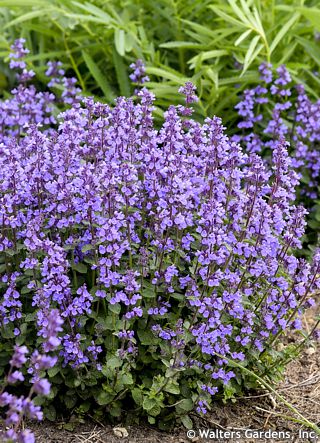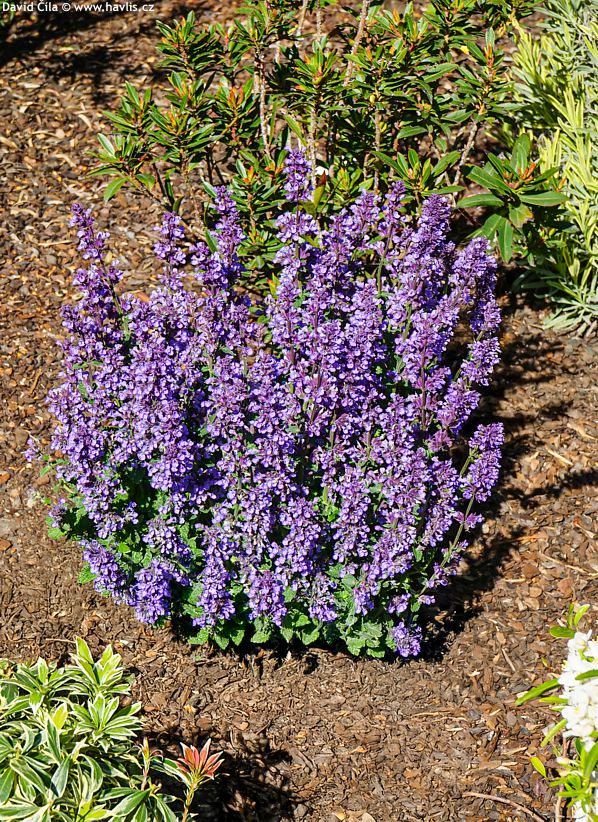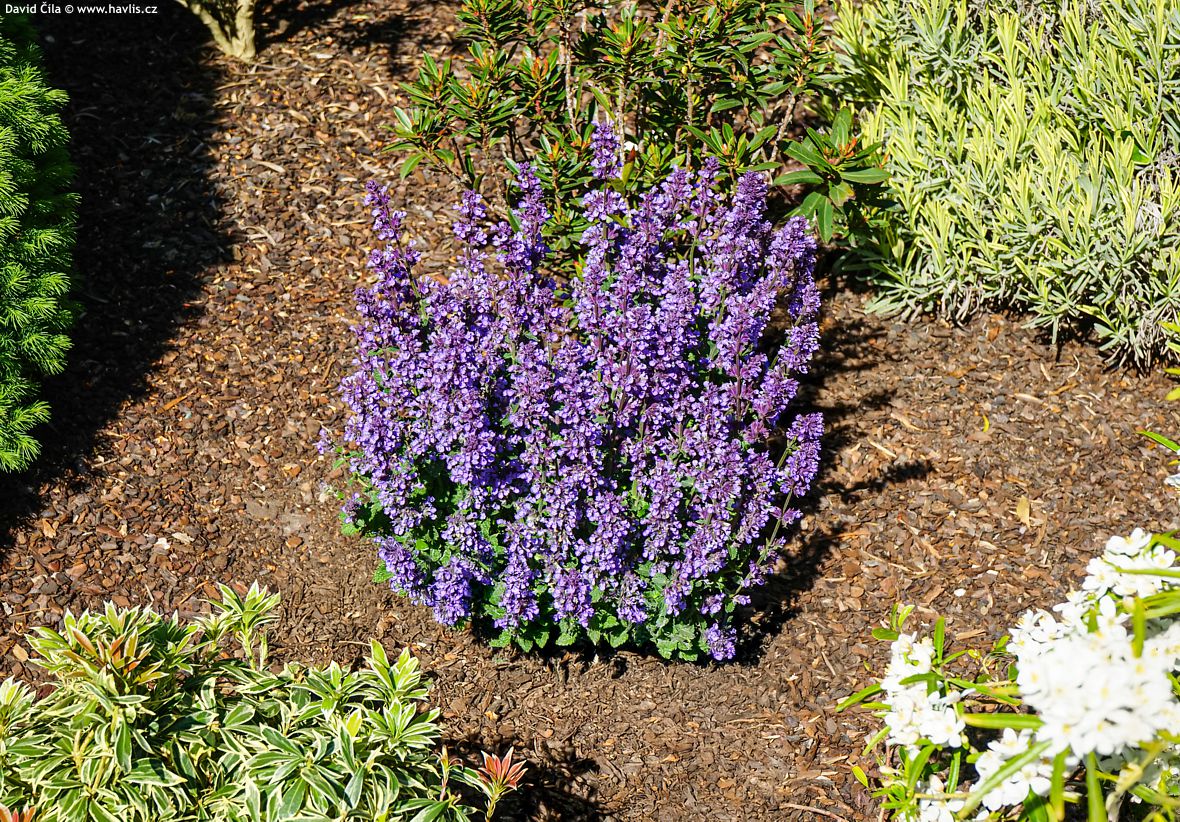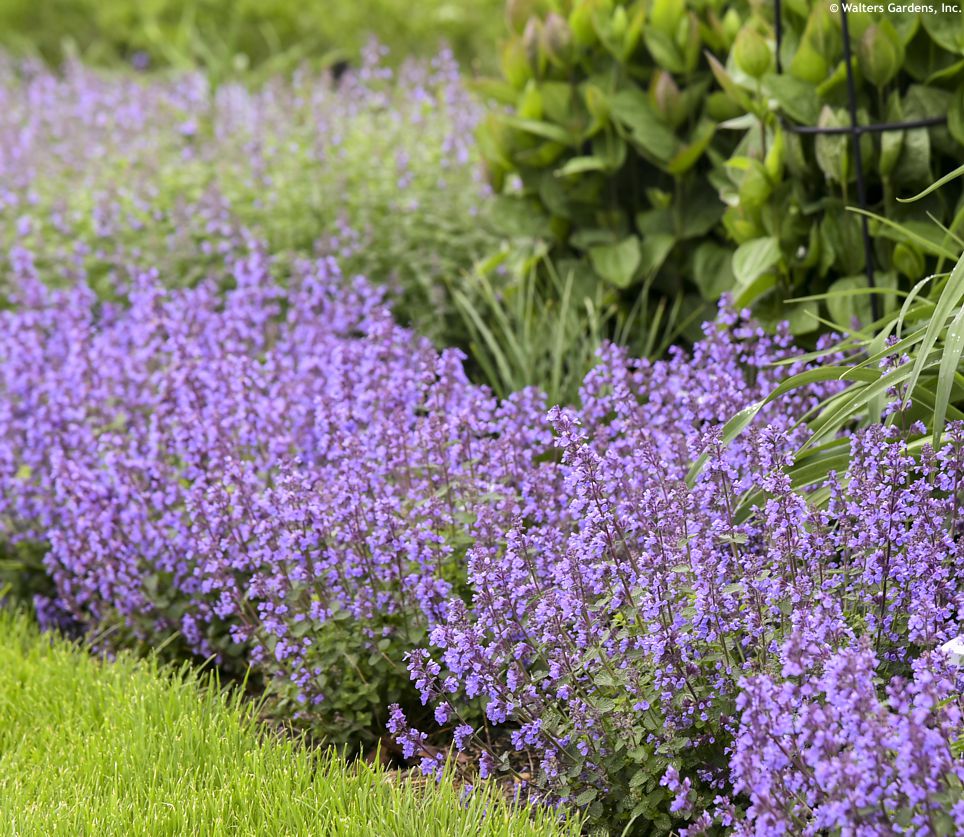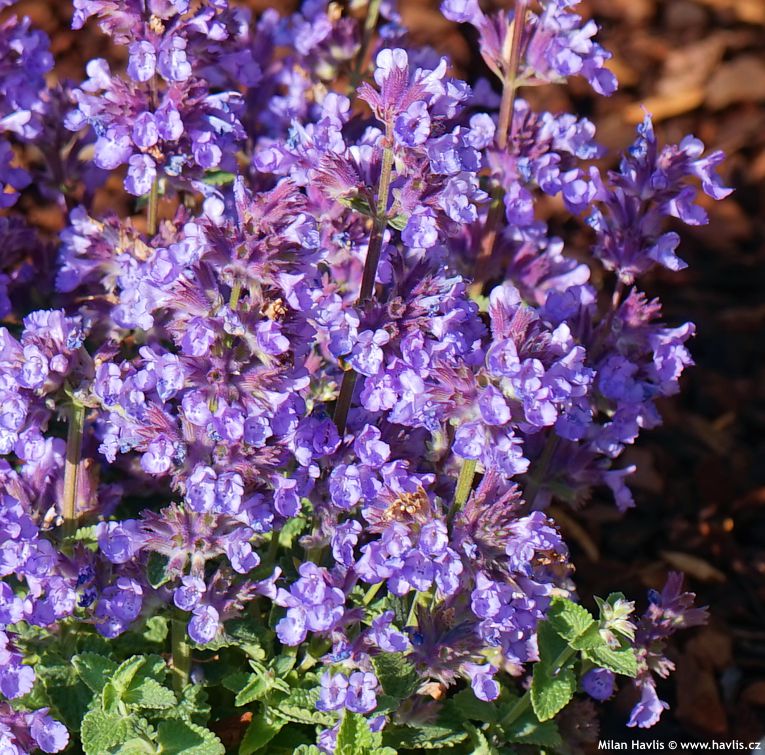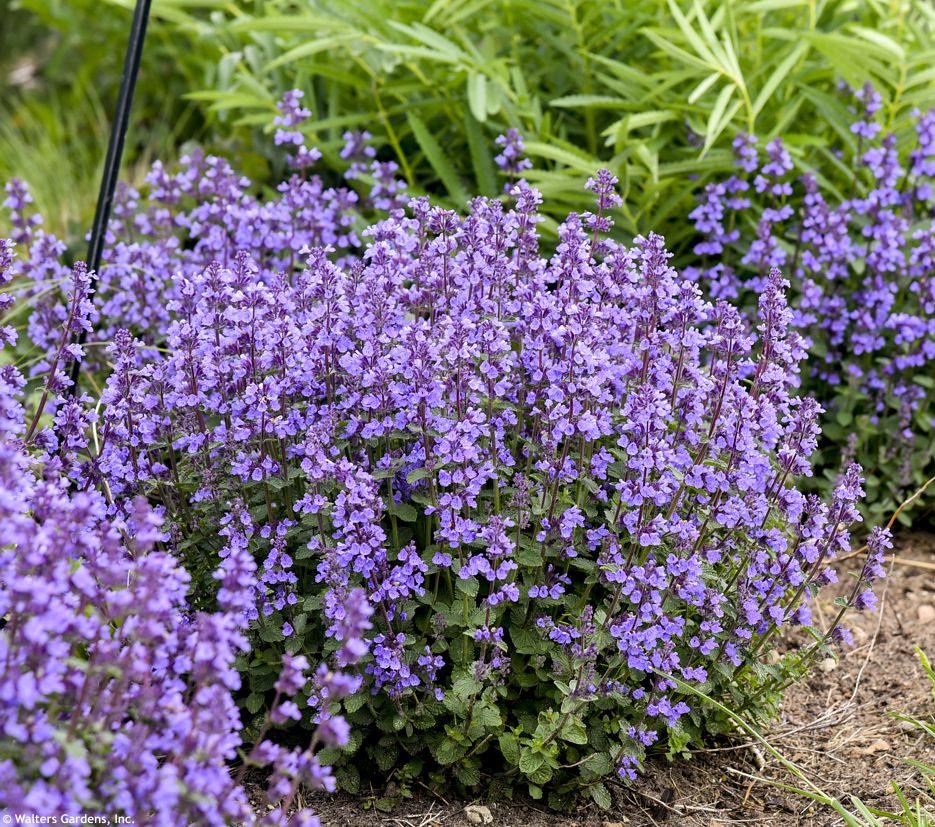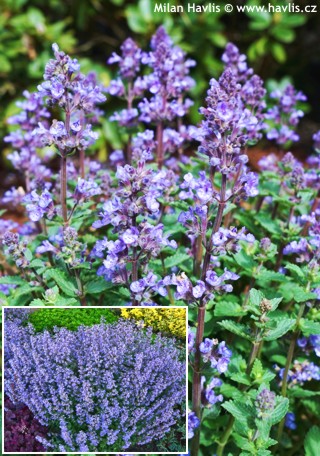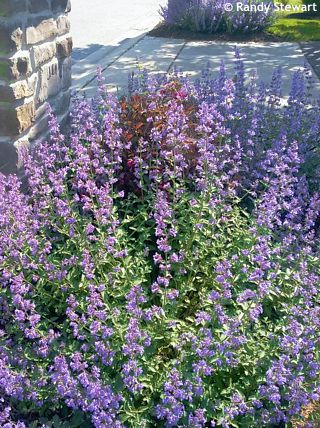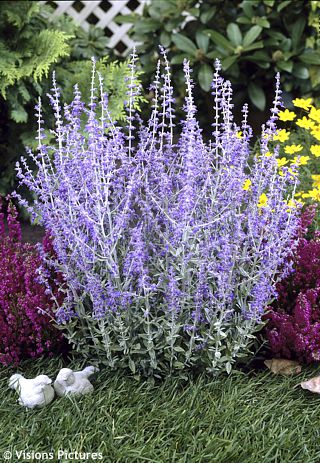Nepeta 'CAT'S PAJAMAS' catmint
Nepeta
Catmint is a large genus of about 250 species found in most temperate and cold regions of North hemisphere. Apart from a very few annuals it is a perennial with aromatic foliage and mostly violet flowers, seldom white, and uniquely yellow. Commonly cultivated species are n. nervosa, n. sibirica, n. x faassenii, and further hybrids. Not all species produce leaves whose scent is attractive to cats.
Cat’s Pajamas is probably the smallest among dwarf hybrid catmints we have seen so far. It makes neat, compact, rounded cushions only about 30 cm in height and 40-50 cm in width at the age of 4-5 years. Its stems are densely covered with flowers from the ground up. The flowers are small, violet-blue and come out from late May. The plant keeps blooming for about a month, then we recommend cutting it just above the ground level which will encourage re-growth into a new clump with fresh leaves, not exhausted after the first flowering, and another one or two flushes of flowers until the last warm and sunny days of early autumn. The leaves are deciduous, small, triangular to narrowly heart-shaped, medium green, and very fragrant of lemon balm and mint with a little spiciness. They turn red in autumn.
Thanks to long flowering period, it is ideal for summer-themed gardens, terraces and balconies, and combined with spring-flowering plants, picking up the baton to bloom after them from June onwards. Cat’s Pajamas variety was bred in 2015 by Hans A. Hansen from the American nursery Walters Gardens as a cross between nepeta Purrsian Blue and a selection of nepeta phylloclamis. US plant patent No. PP31127 was granted in 2019.
Catmint is not too picky about soil type; however, it is not as drought tolerant as some landscape designers think. Especially tall growing species should never dry out completely on hottest days of summer. And on the contrary over-fertilized and over-watered plants may become leggy. Use common garden soil that will drain freely and irrigate the plant only when needed. Catmint is suitable for full sun and part shade. Very hardy to about -37°C (USDA zone 3), and suitable for outdoor pots.
Last update: 25-09-2023

































